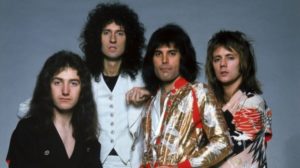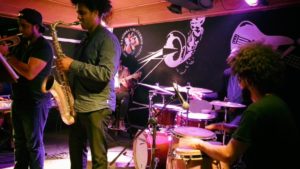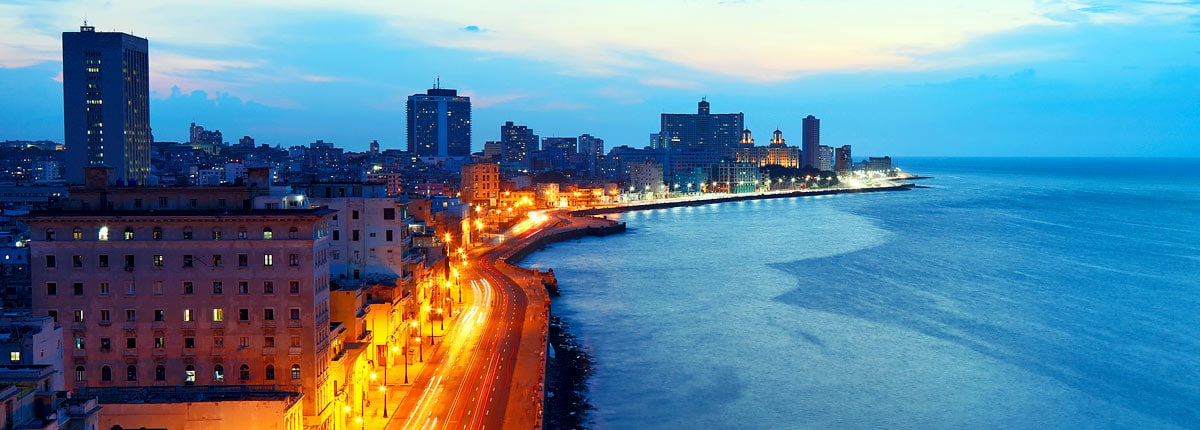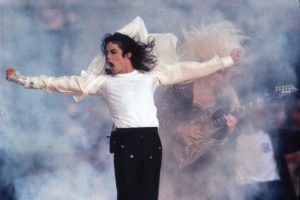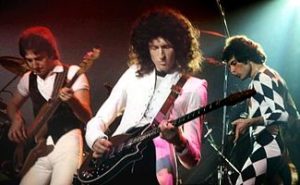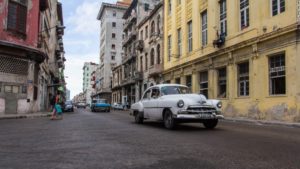 LOS AÑOS 1980s EN CUBA: UN DIARIO DE LOS CUBANOS EN LOS ACONTECIMIENTOS NACIONALES Y MUSICALES DE LA EPOCA.
LOS AÑOS 1980s EN CUBA: UN DIARIO DE LOS CUBANOS EN LOS ACONTECIMIENTOS NACIONALES Y MUSICALES DE LA EPOCA.
Los años 80s serian en Cuba politicamente dificiles aunque los acontecimientos musicales serian interesantes si se miran a luz de los años.
Para una parte importante de los jóvenes de aquellos años las fiestas sabatinas eran la puerta ideal para las conquistas; que se habían reducido al verbo: “tallar” como la expresión del amor en esos tiempos. Un amor que se realizaba la mayor parte de las veces en cualquiera de los club nocturnos que existían en ese entonces en toda la ciudad; sobre todo en la zona del Vedado que se extendían a lo largo de la calle 23; aunque los preferidos eran el ‘Karachi’ y el ‘Turf’; donde la intimidad y la oscuridad —semejante a la que narraban quienes habían estado lejos de la órbita terrestre— solo eran interrumpidas por la luz de la linterna del dependiente cuando se acercaba a recoger el pedido de los enamorados que casi siempre consistía en el conocido y traicionero “telegrama”; una mezcla aleatoria de ron con crema o licor de menta con dos hielos.
En aquella oscuridad musicalmente reinaba el brasileño Roberto Carlos con sus canciones de alto contenido romántico —algunas más melosas que otras— y que se erigieron en el método cartesiano para expresar algo más que sentimientos.
El año 1980 sacudió el mundo de la música internacional por el regreso de Michael Jackson en calidad de solista. Su retorno desató una legión de seguidores de su forma de vestir —zapatos mocasines con medias blancas, pantalón con dobladillos altos—, su manera de bailar y el modo de tratarse el pelo; que en el caso particular de Cuba ante la ausencia de gel dedicado a ese fin desató el consumo indiscriminado de un medicamento llamado ‘Laxagar’, que pasó de combatir el constipado a ser complemento para exhibir la belleza.
Otro suceso de trascendencia musical de ese año, y que competirá con el gusto musical de los jóvenes de estos tiempos lo constituye el grupo inglés ‘Queen’ con su tema ‘Otro más que muerde el polvo’; cuya versión cubiche no puede ser reflejada en estas líneas pero que se puede considerar un antecedente del trap cubano; y que su reproducción en las fiestas sabatinas desataban un frenesí colectivo, que muchas veces involucraban a los adultos que salían de su retiro para participar del acontecimiento. En aquel entonces el estudio de la lengua de la pérfida Albión no era una prioridad en nuestras vidas.
Hacer una fiesta cada noche de sábado era toda una odisea en esos años. Se debía saber quién poseía una grabadora con potencia suficiente para reproducir la música, la mayoría de las existentes eran reproductoras de sonido monoaural (mono) y se consideraba privilegiado a los poseedores de reproductoras estéreo y como clase especial a los que poseían o una doble casetera o un equipo reproductor (3 en 1) que tuviera incorporado además tocadiscos, radio y amplificador. Una segunda etapa implicaba conocer y tener a la mano una selección de casetes con la música adecuada; y tercero era saber que padres y vecinos estaban dispuestos a mantener la calma hasta las 12 de la noche o un poco más.
Con todos estos detalles solucionados se corría en las escuelas cercanas la dirección, hora de la fiesta y lo más importante quién ponía la música; que de acuerdo a cada barrio de la ciudad, o en dependencia de la escuela involucrada se definía si era fiesta “de pepillos” o “de cheos”, de acuerdo a los gustos musicales; aunque también existían las fiestas “eclécticas o mixtas”. Las diferencias eran bien sencillas: los primeros privilegiaban el rock y la música pop norteamericana; para los segundos primaban algunos temas de música cubana y la salsa dura; y en el caso de las “mixtas” solo era excluido el rock. Pero todas tenían como denominador común el que cerca de las 12 de la noche Roberto Carlos y su compatriota José Augusto eran el sonido obligado para que ocurrieran los “acoples” y se ejercitaran las lecciones impartidas por los defensores de la “sexualidad responsable”.
Significativo en la vida musical de estos años 1980s fue la importancia que comenzó a ganar entre los jóvenes habaneros, fundamentalmente, el surgimiento de un programa radial llamado ‘Actividad laboral’ que emitía diariamente al medio día la emisora Radio Ciudad de La Habana y que combinaba, acertadamente, la información sindical con la música del momento, fuera cubana o internacional; y que tenía como clímax el instante en que su conductor recitaba poemas de amor; privilegiando sobre todo al chileno Pablo Neruda y sus ‘Veinte poemas de amor’.
Así marchaba Cuba en un decenio pródigo en acontecimientos musicales y en el que parecía que una parte importante de la música cubana comenzaba a abrirse al mundo, sobre todo en ciertas zonas de Europa y del continente americano.
Sin embargo; determinados acontecimientos darían un giro a la vida política y social y la música habría de reflejarlos. Aun así, nuevos acontecimientos importantes habrán de ocurrir y no se dejará de bailar, cantar y vivir. Nuevos nombres, canciones y emociones se vivirán en los años siguientes.
 THE YEARS 80s IN CUBA: DIARY OF THE CUBANS IN NATIONAL & MUSICAL EVENTS AT THAT TIME.
THE YEARS 80s IN CUBA: DIARY OF THE CUBANS IN NATIONAL & MUSICAL EVENTS AT THAT TIME.
The years 1980s in Cuba would be politically difficult although musical events would be interesting if they look at the light of the years.
For an important part of the youth of those years, Saturday parties were the ideal door for conquests; that had been reduced to the verb: “carve” as the expression of love in those times. A love that was realized most of the time in any of the nightclubs that existed at that time throughout the city; especially in the Vedado area that extended along 23rd Street; although the preferred ones were the ‘Karachi’ and the ‘Turf’; where intimacy and darkness – similar to those narrated by those who had been away from Earth’s orbit – were only interrupted by the lantern light of the clerk when he approached to pick up the order of the lovers who almost always consisted of the acquaintance and treacherous “telegram”; a random mixture of rum with cream or mint liqueur with two ice.
In that darkness, the Brazilian Roberto Carlos musically reigned with his songs of high romantic content – some more mellow than others – and which were erected in the Cartesian method to express more than feelings.
The year 1980 shook the world of international music for the return of Michael Jackson as a soloist. His return unleashed a legion of followers of his way of dressing — moccasin shoes with white socks, pants with high hems — his way of dancing and the way he treated his hair; that in the particular case of Cuba, in the absence of a gel dedicated to that end, he unleashed the indiscriminate consumption of a drug called ‘Laxagar’, which went from fighting the constipated to complementing the beauty.
Another event of musical significance of that year, and that will compete with the musical taste of young people of these times is the English group ‘Queen’ with its theme ‘Another more than bites the dust’; whose cubiche version cannot be reflected in these lines but which can be considered an antecedent of the Cuban trap; and that its reproduction at Saturday parties unleashed a collective frenzy, which often involved adults leaving their retirement to participate in the event. At that time the study of the language of the perfidious Albion was not a priority in our lives.
Having a party every Saturday night was an odyssey in those years. It was necessary to know who owned a recorder with enough power to play the music, most of the existing ones were monaural (mono) sound players and the holders of stereo players were considered privileged and as a special class those they owned or a double cassette player or a reproductive system (3 in 1) that also had a record player, radio and amplifier. A second stage involved knowing and having at hand a selection of cassettes with the right music, and third was to know that parents and neighbors were willing to remain calm until 12 at night or a little more.
With all these details solved, the address, time of the party and, most importantly, who played the music were running in the nearby schools; that according to each neighborhood of the city, or depending on the school involved, it was defined whether it was a “pickle” or “cheos” party, according to musical tastes; although there were also “eclectic or mixed” parties. The differences were very simple: the former privileged American rock and pop music; For the latter, some Cuban music and hard salsa songs prevailed; and in the case of the “mixed” only rock was excluded. But all had as a common denominator that about 12 o’clock at night Roberto Carlos and his compatriot José Augusto were the forced sound for the “couplings” to occur and the lessons taught by the defenders of “responsible sexuality” be exercised.
Significant in the musical life of these 1980s was the importance that began to gain among Havana youth, fundamentally, the emergence of a radio program called ‘Work activity’ that broadcast daily Radio Ciudad de La Habana radio station and that combined, rightly, the union information with the music of the moment, whether Cuban or international; and that he had as climax the moment in which his conductor recited love poems; privileging especially the Chilean Pablo Neruda and his ‘Twenty love poems’.
This is how Cuba was marching in a prodigal decade in musical events and in which it seemed that an important part of Cuban music began to open up to the world, especially in certain areas of Europe and the American continent.
This is how Cuba was marching in a prodigal decade in musical events and in which it seemed that an important part of Cuban music began to open up to the world, especially in certain areas of Europe and the American continent.
Nevertheless; certain events would turn political and social life and music should reflect them. Even so, important new events will happen and they will not stop dancing, singing, and living. New names, songs, and emotions will be lived in the following years.
Agencies/ Jiribilla/ Emir Garcia/ Extractos/ Excerpts/ Internet Photos/ YouTube/ Arnoldo Varona/ www.TheCubanHistory.com
THE CUBAN HISTORY, HOLLYWOOD.




